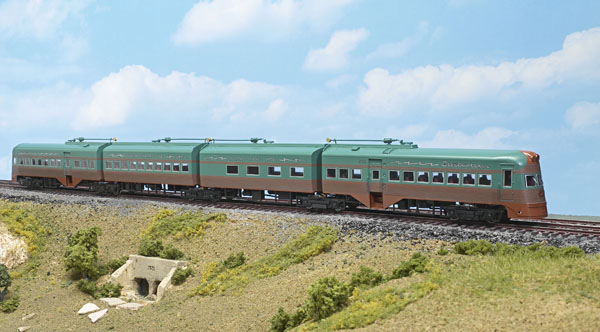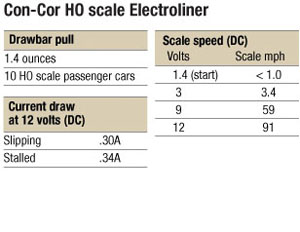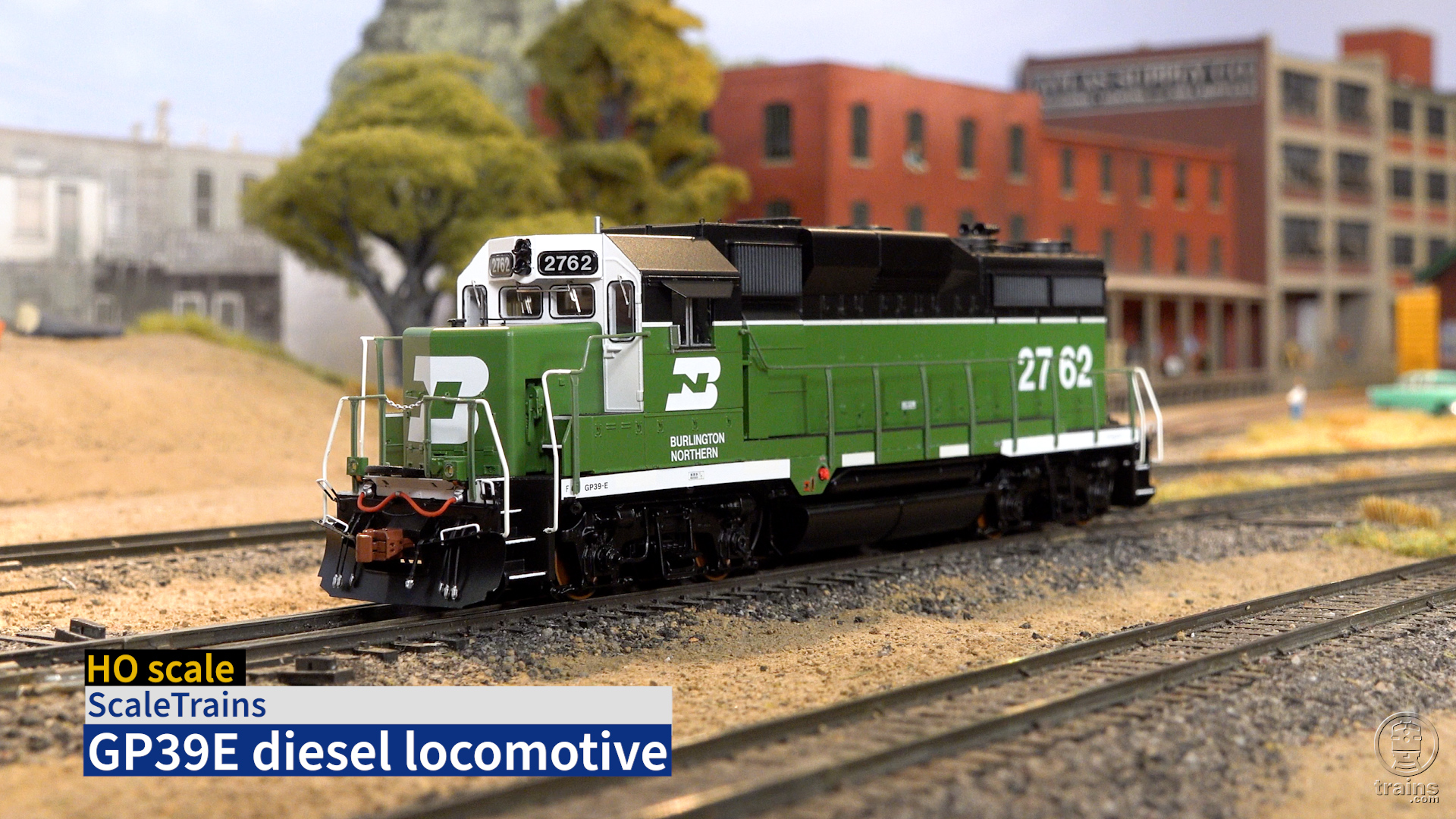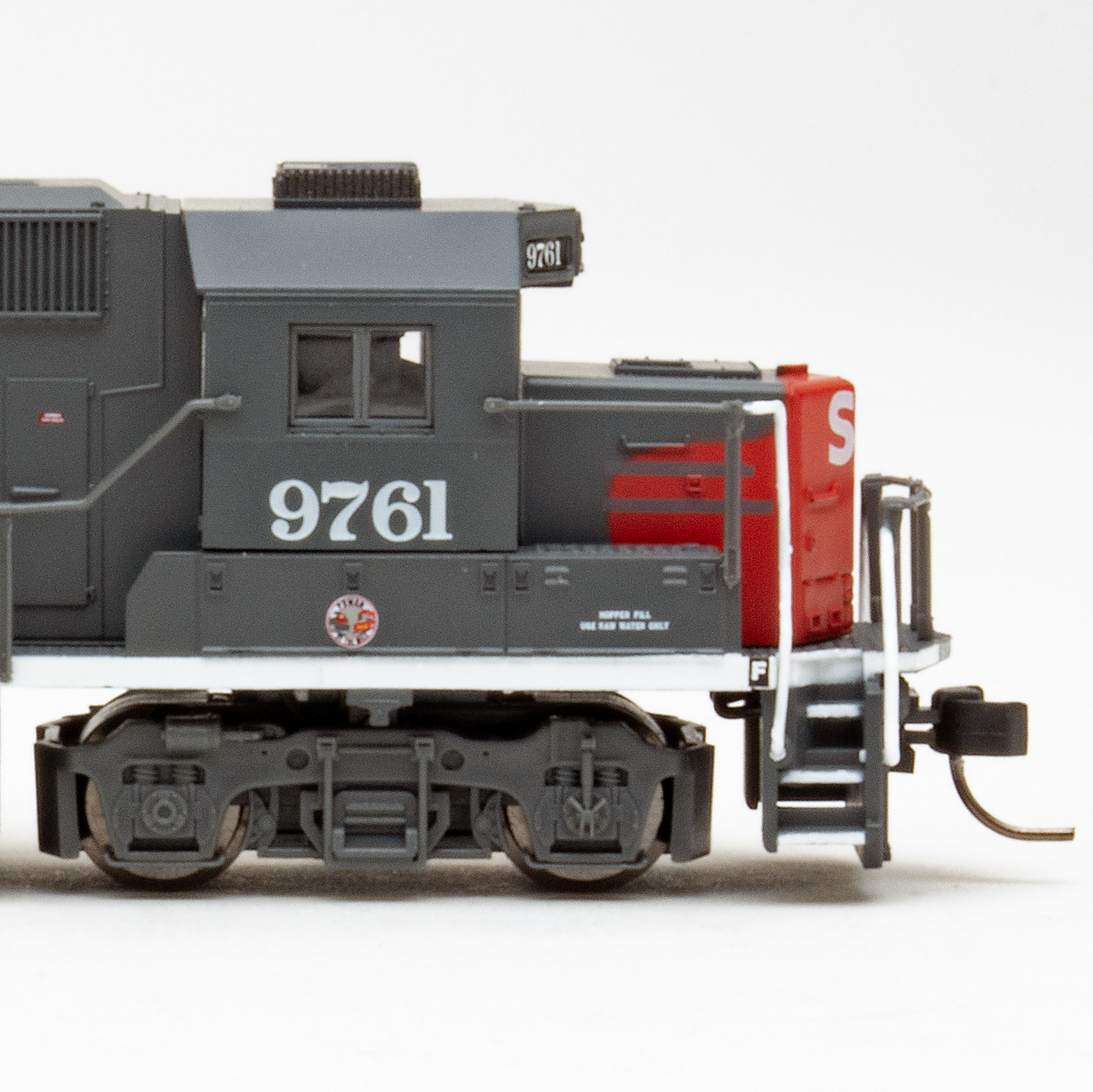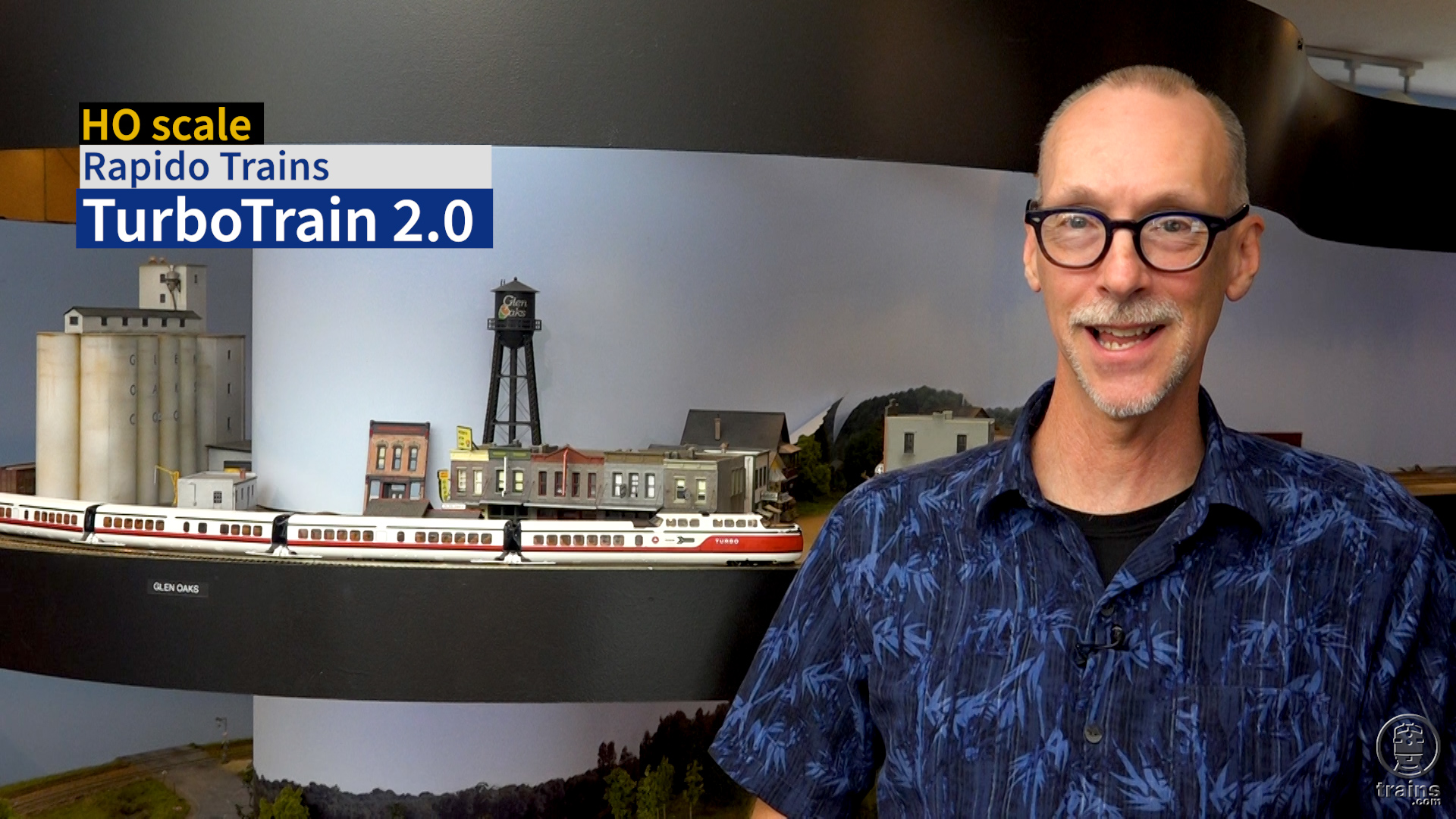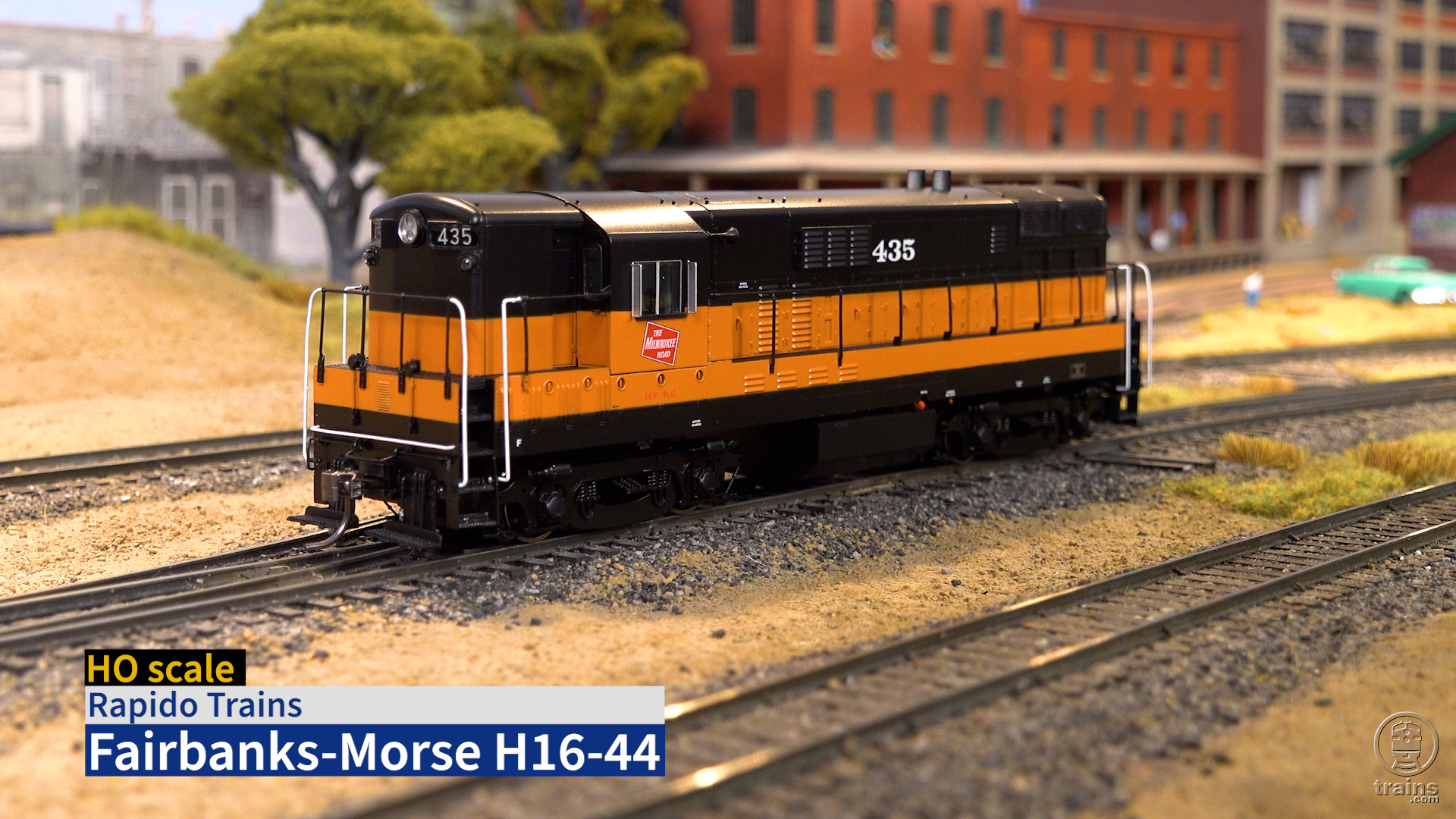A desperate gamble. The Electroliner was conceived as the North Shore Line’s ticket out of bankruptcy. The road was desperate for cash after the lean years of the Depression, and its Chicago-to-Milwaukee traffic was under pressure from the Chicago & North Western’s 400s and the Milwaukee Road’s Hiawathas. The interurban road’s answer to those high-speed streamliners was one of its own.
Two all-electric, four-unit Electroliners were delivered to the North Shore Line in January 1941. They would become not only the line’s symbol, but its salvation. They would also be its workhorses, making five trips a day apiece between Chicago and Milwaukee. The Electroliners racked up close to 3.5 million miles each over the next 22 years. And even after the North Shore Line ended operations in January 1963, the trains rolled on for nearly two decades more as the Liberty Liners of Philadelphia’s Red Arrow Lines.
Con-Cor supplies reprints of two 1982 Trains magazine articles on the history of this fascinating train, along with reproductions of brochures and timetables – a thoughtful extra.
Clean lines. The model accurately captures the distinctive appearance of the prototype. Its major dimensions match those on a builder’s diagram reprinted in Cars of the North Shore (Central Electric Railfans’ Association Bulletin no. 68, April 1947).
Our sample’s paint was applied smoothly and evenly, matching the prototype’s turquoise-and-salmon paint scheme quite well. The silver lettering, bordered in black, is crisp and opaque, as are the silver frames on all the windows.
In June 1941, a grade-crossing crash resulted in severe underbody damage to Electroliner 803-804. When the train was rebuilt, the North Shore added protective steel framing below the sides of the cars on both trains. Con-Cor’s model depicts this Electroliner.
How slow can you go? In direct-current operation, at 3 volts – a typical starting voltage for many other locomotives – the Electroliner moved steadily at 3.4 scale mph. But the train actually started at a much lower voltage. At only 1.4V, the train crawled along so slowly two different speed gauges in our workshop failed to measure it. This means the Electroliner‘s low speed is less than the gauges’ 0.1 mph increment – a testament to the model’s smooth drive train.
At 12V, the Electroliner reached 91 scale mph, about the same top speed at which the prototype usually operated. (A real Electroliner once reached 111 mph, but that was under test conditions.) Even at this speed, the model ran smoothly and quietly.
The Con-Cor Electroliner has an eight-pin DCC decoder socket, and holes in the lead unit’s floor for installation of a speaker. But as of this writing, the manufacturer is not aware of a DCC sound decoder that includes prototypically accurate Electroliner sounds. So DCC modelers will have to use a motor-only decoder or a sound decoder with recordings of another electric locomotive.
Speaking of electrical pickup, the well-modeled sprung trolley poles on the train are wired. If you want to run the Electroliner on overhead power, simply remove the lead unit’s body shell and flip a switch on the printed-circuit board under its roof.
On our sample, I found that five of the model’s 10 wheelsets were out of gauge, being slightly narrow. I removed them from the trucks and twisted them back into gauge fairly easily.
The prototype was designed to handle the sharp curves of Chicago’s famed elevated Loop, and the model is no different. Con-Cor says it can negotiate a 10″ curve.
Though we don’t have an HO test track with curves that tight here at MR, our sample Electroliner had no problems traversing the 18″ curves, no. 4 turnouts, and multiple grade crossings of our Beer Line project layout.
Con-Cor’s Electroliner is almost good enough to make a dedicated steam modeler like me think about stringing overhead wire.
Price: Four-car set, $439.98; extra coach car, $139.98
Manufacturer
Con-Cor International
8101 E. Research Ct.
Tucson, AZ 85710
www.all-railroads.com
Road names: Chicago, North Shore & Milwaukee (two road numbers), Philadelphia Suburban Transit (two numbers). Also available painted silver but unlettered.
Era: 1941-1963 (North Shore Line), 1963-1982 (Philadelphia Suburban Transit)
Features
Constant directional lighting (rear light switches to red based on direction of travel)
Detailed, lighted interiors
Eight-pin Digital Command Control decoder socket
Etched-metal windshield wipers
Flexible rubber diaphragms
Flush-fitting window glazing
Minimum radius: 10″
Painted motorman figures
Weight: lead unit alone, 5 ounces; all four cars, 13.5 ounces
Wired, sprung trolley poles
Wire grab irons





